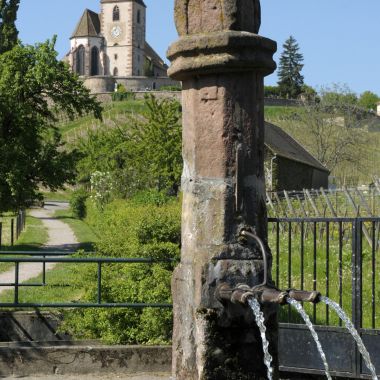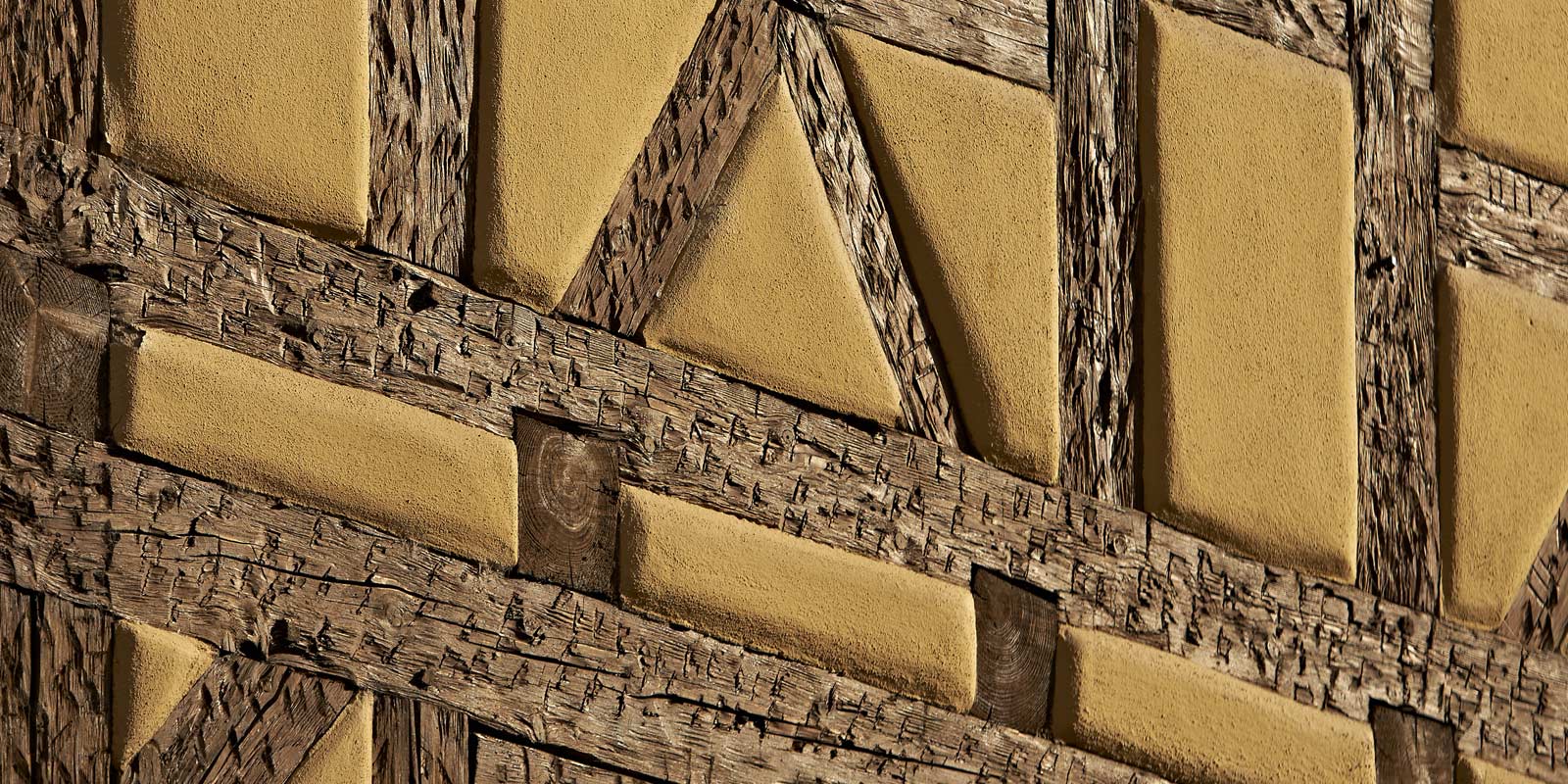Discovery circuit of Hunawihr
Description

Located on the Alsace Wine Route, Hunawihr is a typical Alsace village set against a background of vineyards. Overlooking the village, the church of Saint-Jacques-le-Majeur (15th-16th centuries), surrounded with its walled cemetery, preserves an environment which remains intact and provides the perfect setting for this exceptional
whole. The village consists of winegrower houses with their gable ends stretching out over the street.
Most of these houses were built in the 16th to the 18th centuries (although there are a few dating back to the 15th century). In these houses, the stone-built ground floor served as a storeroom while the upper floor, usually timber-framed, was the dwelling.
This landscape and architectural heritage makes Hunawihr one of the ”Most Beautiful Villages in France”
(Plus Beaux Villages de France)
.
A little history...
As legend would have it, Hunawihr was founded in the 7th century by Hunon and his wife Hune to whom Hunawihr owes its name.
Hunon left the village to the Saint-Dié monastery in the Vosges.
During the 13th century, Hunawihr formed part of the lands of the Lord of Riquewihr*, owned by the Bishops of Strasbourg who had granted it as a fiefdom to the lords of Horbourg*.
In about 1324, the counts of Horbourg* sold their assets to the Count Ulrich of Wurttemberg*, their cousin.
In 1397, count Eberhard II of Wurttemberg*, through his marriage to the heiress to the county of Montbéliard, enabled the powerful counts of Wurttemberg-Montbéliard* to remain owners of the Riquewihr seigneurie up until the French Revolution. The county of Wurttemberg was elevated to the rank of Duchy in 1495.
On the 15th April 1520, the village church was designated as a pilgrim centre at the behest of Duke Ulrich VIII of Wurttemberg*, responding to a request from his subjects who sought to show their devotion to Hune. Hune was raised to the rank of saint because of her work with the poor (the legend tells us that Saint Hune would wash the clothes of the poor in the fountain that bears her name. She has also been attributed with miracles such as causing the fountain to spout wine during a bad grape harvest year). The church of Saint-Jacques-le-Majeur in
Hunawihr became a pilgrimage centre focusing on the relics of Saint Hune which were then kept in the church’s crypt.
In 1534, Georges of Wurttemberg* introduced the Protestant religion into Hunawihr. Initially, the village followed the Zwingli (Swiss) inspired Reformation promoted by father Nicolas Koenig who had become a pastor (this pastor significantly helped propagate this movement to neighbouring villages). Georges of Wurttemberg’s successor imposed the Lutheran religion in 1559. In 1687, under Louis XIV, it again became possible to be a practicing Catholic in Hunawihr: the simultaneum was put in place and, to this day, the church is still in dual use by both the Protestant and Catholic communities.
* lord(s) of the Holy German Roman Empire.















